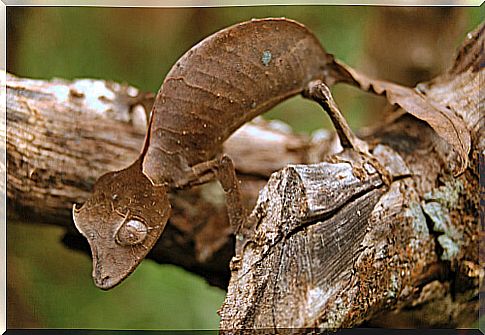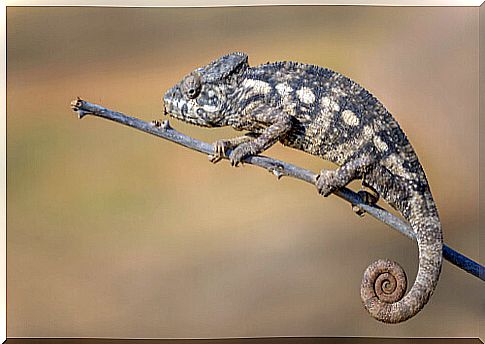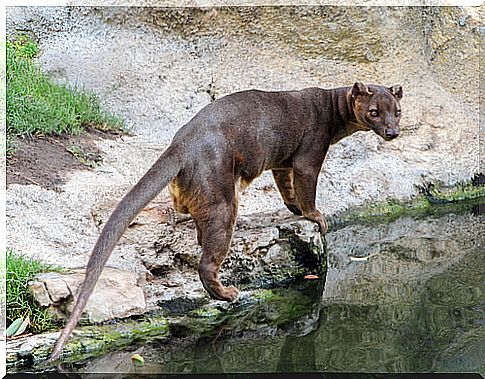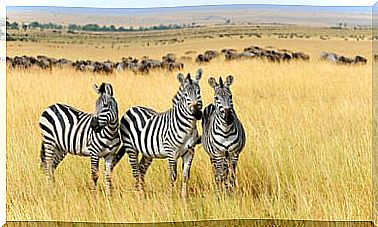The Impressive Fauna Of Madagascar

This African island is considered one of the countries with the greatest biodiversity in the world. The vast majority of Madagascar’s fauna is endemic, which means that it does not live elsewhere in the wild. Learn all about its main species in this article!
How is the fauna of Madagascar composed?
It is known that until the arrival of man – 2,000 years ago – the island was inhabited by large animals, such as the hippopotamus, the aye-aye and the ‘elephant birds’, which measured about three meters.
Deforestation, hunting, urban life and tourism have led to the extinction of many species. The good news is that there are currently more than 50 national parks and protected reserves, in which we can see several specimens of the typical Madagascar fauna. Among them are the following:
1. Leaf-tailed gecko
This is one of the species within the fauna of Madagascar that attracts the most attention because its body, especially its tail, emulates the shape of a leaf very well – hence its name – and this makes it a master of the camouflage.
This gecko – the image that heads this article – is small, lives in the tropical forests of the island and is brown or greenish in color, although yellow, orange and purple have also been found. Since he does not have eyelids, he uses his long tongue to clean the dirt that prevents him from seeing well.
2. Lemur
These characteristic primates of the island are famous for their long black and white tails, and their bulging eyes. Lemurs have nocturnal habits, can weigh up to nine kilos and feed mainly on leaves and fruits, although in some cases they can ingest small insects.

The social scheme of this animal is based on the female domain – matriarchy – and each group is made up of about 15 individuals. Their biological rhythm is related to the lunar phases and the time of the year, since they are more active with a full moon and can perform a ‘dormancy’ or mild hibernation to reduce their body temperature and metabolism; it is the only primate with this behavior.
3. Radiated tortoise
Also known as the star tortoise, this species is in a critical state of extinction and, in addition to living in Madagascar, few specimens can be found in the Mauritius Islands, where it has been introduced by man. It prefers arid, dry regions with bushes and thorny forests.

The radiated tortoise is known for its shell: the background is dark brown with yellow or dark brown lines and circles, as if they were stars. It is undoubtedly a very attractive and large animal: males can reach 20 kilos. It is also very long-lived, since they can live 100 years.
4. Giant chameleon
It is a scaled sauropsid, the largest chameleon that exists – it can measure up to 70 centimeters – and one of the representatives of the Madagascar fauna. The head has a curved crest, larger in males, and the body is green and brown.

The Madagascar giant chameleon is found in the forest, feeds on birds, insects, and small mammals, and can live for about 10 years. Sexual maturity occurs after one year and gestation – it is ovoviparous – lasts about 40 days.
5. Pit
It is the largest mammal on the island and its diet is based mainly on lemurs. Its appearance is a ‘combination’ between several carnivores: the body of a cougar, ears of a bear, paws of a cat, and a snout of a dog. They can measure 80 centimeters and the tail is even longer than the torso.

Its fur is dark brown, fawn or reddish, it has short hair, retractable claws, short muscular legs and an elongated body. It can jump from one tree to another, when it walks on the ground it supports the entire sole of the foot, and it is nocturnal and solitary. It marks its territory through powerful secretions.
The fossa is considered a ‘diabolical’ animal in Madagascar, as many legends revolve around it. In rural areas it is accused of killing ducks, chickens and pigs, which has caused a decline in the population in recent years. However, it is a fairly docile animal and even affectionate if it is in captivity.









